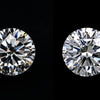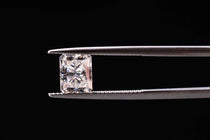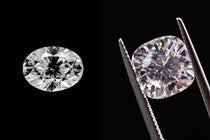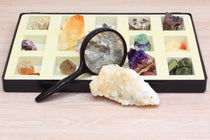Creating jewelry with UV resin has become increasingly popular due to its quick curing time and clarity. When you're selecting the best UV resin for your jewelry projects, it's essential to consider factors such as curing speed, the resin's viscosity, and its resistance to yellowing over time. UV resin differs from its two-part epoxy counterpart because it requires ultraviolet light to cure, which can happen in minutes under a UV lamp or sunlight, saving you time and allowing for more rapid creation and production.
Table Of Contents
- Understanding UV Resin
- Essential Tools and Materials for UV Resin Jewelry
- Creating Your UV Resin Jewelry
- Tips for High-Quality Resin Jewelry
- Advanced Techniques and Decorations
- Troubleshooting Common UV Resin Issues
- Innovative Applications and Projects
- Selecting the Best UV Resin for Your Needs
- Maintaining Your UV Resin and Jewelry
- Frequently Asked Questions
Your workspace and the specific types of jewelry you're creating will influence your choice of UV resin. Some resins are formulated to be more flexible, while others are developed for their superior hardness and scratch resistance. For intricate work where precision is key, a resin with low viscosity might be preferable as it can easily fill small molds and bezels without introducing bubbles.
When working with UV resin to create jewelry, safety and final aesthetics are important. Make sure the UV resin you choose is non-toxic and has good resistance to yellowing to ensure your jewelry remains pristine over time. The durability of fracture-filled emeralds with a new filler, for example, is an important consideration when creating high-quality pieces that last. The right resin will provide a clear, glassy finish that showcases your work at its best while withstanding the wear and tear of everyday use.
Understanding UV Resin
Selecting the best UV resin for your jewelry crafting involves understanding its characteristics, comparing it with alternatives like epoxy resin, and ensuring you work with safe, non-toxic materials.
Characteristics of UV Resin
| Characteristic | Description |
|---|---|
| Composition | A liquid polymer that hardens (cures) when exposed to ultraviolet (UV) light. |
| Curing Time | Quick curing process, often within a few minutes, when exposed to UV light sources. |
| Hardness | Results in a durable and rigid finish after the curing process is complete. |
| Transparency | Can be formulated to produce both transparent and opaque finishes. |
| Viscosity | Comes in various viscosities, allowing for different applications and thicknesses. |
| Applications | Used for crafting, jewelry making, resin art, and other DIY projects. |
| Color Options | Available in a wide range of colors, including clear, tinted, and pigmented varieties. |
| Safety Precautions | Should be used in well-ventilated areas, and skin contact should be minimized to avoid irritation. |
| Post-Curing | May require additional post-curing to enhance hardness and remove any residual tackiness. |
UV resin is a one-part resin that cures quickly when exposed to UV light. It's ideal for jewelry making due to its high-gloss finish and transparent look. Unlike epoxy resin, which requires careful mixing, your UV resin is ready to use straight from the bottle, saving you time. Cure times can be as fast as a few minutes under a UV lamp, leading to an efficient crafting process.
UV Resin vs. Epoxy Resin
| Aspect | UV Resin | Epoxy Resin |
|---|---|---|
| Composition | Liquid polymer that cures with UV light exposure. | Two-part resin (resin and hardener) that cures through a chemical reaction. |
| Curing Time | Quick curing, often within a few minutes under UV light. | Slower curing, typically requiring hours to overnight for complete curing. |
| Hardness | Durable and rigid finish after UV curing. | Results in a hard, sturdy finish after complete curing. |
| Application | Well-suited for smaller projects and detailed work due to quick curing. | Preferred for larger projects and applications requiring longer working time. |
| Viscosity | Comes in various viscosities, allowing for different applications. | Can be found in different viscosities, offering versatility in use. |
| Use Cases | Commonly used in crafting, jewelry making, and small DIY projects. | Used for various applications, including art, woodworking, and coating surfaces. |
| Odor | Generally has a milder odor compared to epoxy resin. | May have a stronger and more noticeable odor during application. |
| UV Light Dependency | Requires UV light for curing, limiting working time without a UV light source. | Not dependent on UV light; cures through a chemical reaction between resin and hardener. |
When creating jewelry, it's important to understand the difference between UV resin and epoxy resin. Epoxy resin typically comes in two parts—a resin and a hardener—that you must mix. It has a longer curing time, usually taking hours or even days to fully set without heat. Your UV resin, on the other hand, cures rapidly with UV light, offering more immediate results for small projects. However, for larger pieces, epoxy might be favorable due to its longer working time.
Safety and Non-Toxic Materials
When working with resins, your safety is paramount. Non-toxic UV resins are available and are a safer option, especially when working in spaces without adequate ventilation. These resins are formulated to be less harmful, but you should still wear protective equipment such as gloves and safety glasses. Ensure your workshop is well-ventilated and follow all safety guidelines provided by the resin manufacturer.
- Non-toxic: Opt for UV resins labeled non-toxic.
- Safety Gear: Utilize gloves and safety glasses while working.
- Ventilation: Work in a well-ventilated space or use a respirator if necessary.
Essential Tools and Materials for UV Resin Jewelry

When crafting UV resin jewelry, your success hinges on selecting quality materials and equipment. The right type of resin, UV lamp, and molds are crucial components that contribute to the creation of stunning, durable pieces.
Types of Resin
UV resin is particularly suited for jewelry making due to its quick-curing properties under UV light. It's available in both hard and soft types; the former is ideal for projects that require rigidity, while the latter is used when flexibility is needed. Hard type resins give a shiny, glass-like finish to your jewelry, paramount for that attractive, professional look.
Choosing the Right UV Lamp
For curing UV resin efficiently, a specialized UV lamp is indispensable. Ensure you choose a lamp with sufficient wattage—typically between 36 to 54 Watts—to cure the resin effectively. UV lamps come in various forms, such as nail lamps or torches, but for jewelry, a broad and even light source tends to work best in hardening resin within minutes.
Selecting Molds for Jewelry Making
Molds are a gateway to creativity in resin jewelry. Silicone molds are highly recommended as they're flexible, durable, and come in myriad designs suitable for jewelry making. Consider the desired shape and texture of your final product when selecting your jewelry mold. Additionally, opt for translucent silicone molds to allow UV light to penetrate from all sides, ensuring an even cure.
Creating Your UV Resin Jewelry

When crafting UV resin jewelry, precision in the mixing process, careful incorporation of pigments and accessories, effective curing, and meticulous finishing are essential for professional results.
The Mixing Process
To ensure a high-quality piece, begin by preparing your resin and hardener. Measure out your UV resin carefully; any deviation could affect curing times and the final texture. Stir slowly and thoroughly to minimize bubbles, which can mar the clarity of your jewelry. A clear, bubble-free mixture sets the foundation for a glassy finish.
Adding Pigments and Accessories
Now, infuse your personality into the piece. Incorporate vibrant pigments or subtle tints to the resin for color. Add glitter or tiny accessories for an eye-catching effect. Mix these elements uniformly to avoid irregularities in the texture, maintaining a harmonious blend throughout the resin.
The Curing Process
UV resin cures quickly under UV light, but the curing time can vary based on the thickness and type of resin. Expose your piece to a UV lamp or sunlight, watching as the resin transforms from a liquid to a solid state. The key to a thorough cure is even exposure, so rotate your piece to ensure all sides harden uniformly for a strong, fast curing process.
Final Sealing and Finishing Touches
Once cured, examine the jewelry for any tacky areas, and if necessary, apply another brief period of UV light. Lastly, seal your piece to protect the surface and enhance the glassy finish. Delicate sanding may be needed to smooth edges or refine the shape. This creates a comfortable, wearable piece of jewelry with a professional touch.
Tips for High-Quality Resin Jewelry
When creating resin jewelry, your goal is to produce pieces that are durable, transparent, and free of imperfections such as yellowing and bubbles. Paying close attention to the materials you use and the procedures you follow can significantly impact the quality of your final product.
Preventing Yellowing and Bubbles
-
Choose the Right Resin: Select a high-quality UV resin specifically formulated to be yellowing resistant. This can help ensure that your jewelry maintains its clarity over time.
-
Work in the Right Environment: Make sure to work in a room with consistent temperature and low humidity to prevent premature curing and air bubbles.
-
Avoid Excessive Sunlight: Protect your resin pieces from excessive UV light exposure both during and after curing, as prolonged sunlight can contribute to yellowing.
-
Incorporate Bubble-Reduction Techniques:
- After mixing your resin, let it sit for a few minutes to allow air bubbles to rise to the surface.
- Use a toothpick or a pointed tool to guide bubbles away from the piece before the resin begins to set.
- Consider using a pressure pot or a vacuum chamber to help eliminate bubbles for professional-level quality.
Ensuring Durability and Transparency
-
Proper Curing: Cure the resin according to the manufacturer's instructions to achieve a hard, scratch-resistant finish. Under-cured resin can remain tacky and more prone to scratches.
-
Post-Curing Process: Post-cure your pieces, if necessary, for additional hardening. This process might involve extra time under UV light or heat to ensure the resin reaches its optimal strength and transparency.
-
Polishing: For the ultimate transparent finish, polish the resin with a fine-grit sandpaper and a polishing compound after it's fully cured. This can remove any imperfections and enhance the piece's shine.
By meticulously following these tips, you can create high-quality resin jewelry that remains beautiful and clear for years to come.
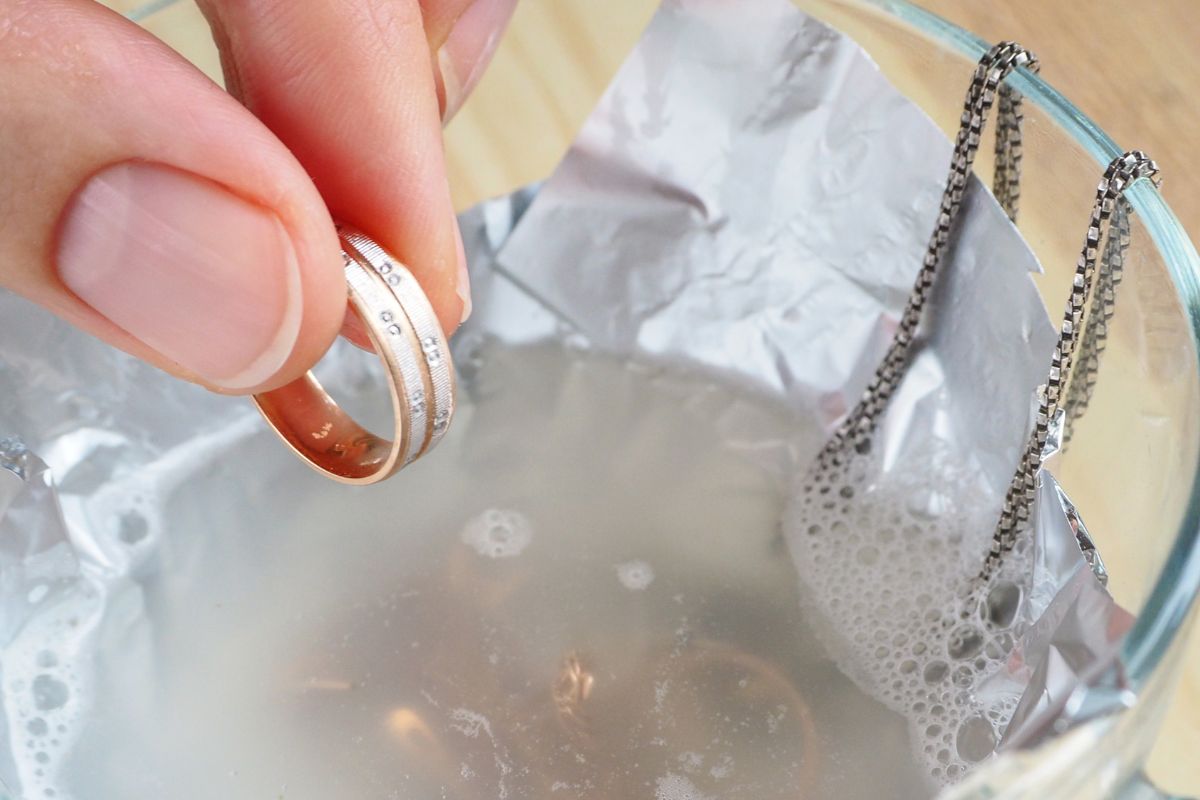
Advanced Techniques and Decorations
When delving into the realm of UV resin for jewelry making, advanced techniques can unleash a wealth of creative potential in your work. From embedding various objects for a unique flair to carefully layering resin for added depth, the possibilities are almost limitless.
Incorporating Objects and Textures
In your UV resin jewelry creations, such as earrings, rings, and pendants, you can embed a variety of objects to add texture and personal touch. Dried flowers are a popular choice, providing a natural, delicate look to your pieces. You can also include glitter, beads, or even small charms to reflect personal styles or themes. The key is to fully cover these items with resin to protect them and ensure a smooth finish.
- Earrings: Insert tiny beads or metallic elements for a subtle shimmer.
- Rings: Place a single dried flower or leaf for a nature-inspired design.
- Necklaces/Pendants: Embed a series of coordinated items to tell a visual story.
Creating Depth with Layers
Building depth within your jewelry pieces such as keychains and decorations, can be achieved through a multi-layered pouring technique. This process involves pouring a thin layer of resin, letting it cure, and then adding another layer on top which may contain additional objects or colored resin. Repeating this process not only adds visual depth but can also create a 3D effect.
- First Layer: A clear base that sets the stage for subsequent details.
- Middle Layers: May contain objects, colored inks, or paints creating the core design.
- Top Layer: Typically clear to encapsulate the design elements and create a doming effect.
By mastering these techniques, you can enhance your handcrafted UV resin jewelry and truly make each piece your own.
Troubleshooting Common UV Resin Issues
In your journey to creating stunning jewelry pieces with UV resin, it's natural to encounter a few hiccups. Addressing issues like tackiness or the effects of ambient conditions can be pivotal in achieving a flawless finish.
Dealing with Tackiness and Inconsistencies
When your UV resin remains tacky after curing, it's often a sign of incomplete curing. This can be caused by insufficient UV light exposure or resin that cures too fast, trapping unreacted material beneath the surface. Here's how to tackle it:
- Ensure Adequate UV Light: Check that your UV lamp is powerful enough and that you're curing the resin for the recommended duration.
- Cure in Layers: For thick pours, cure in thinner layers to give each section enough exposure.
- Post-cure Surface: If tackiness persists on the surface, wipe it gently with a cloth dipped in isopropyl alcohol, and expose again to UV light.
Remember, fast curing resin might save time but can result in a sticky surface if not cured properly.
Adjusting for Ambient Conditions
Humidity and temperature can significantly affect UV resin's behavior, from how it levels to its curing time.
- Optimal Conditions: Work in an area where temperature and humidity are controlled; typically, a humidity level below 50% is ideal.
- Self-leveling: If you're struggling with resin spreading evenly, gently heat the surface with a heat gun to make it more fluid, which will help with self-leveling.
- Adjust Cure Time: Higher humidity might necessitate longer cure times, so be patient and adjust accordingly.
By considering these factors, you'll mitigate common issues and refine the quality of your UV resin jewelry projects.
Innovative Applications and Projects
When seeking out the best UV resin for jewelry, you're tapping into a realm of creative potential that extends far beyond traditional accessories. From personal adornments that make a statement to crafting unique gifts, high-quality UV resin opens up a world of innovation.
Jewelry Beyond Earrings and Necklaces
Your adventure into the versatile world of jewelry-making with UV resin allows you to push the boundaries of typical accessories. Imagine constructing intricate bracelets that embody a miniature garden under a clear dome, or designing custom lapel pins that capture a drop of nature with real flowers encased in resin. These projects showcase not only your skill but also your individual sense of style and creativity.
- Bracelets with real flowers or metallic flakes
- Custom lapel pins and brooches
- Personalized resin rings with embedded designs
Gifts and Decorative Home Items
The allure of UV resin as a hobby isn't confined to jewelry. Your talents can bloom into creating one-of-a-kind gifts and decorative home items. Think of high-quality resin coasters with embedded photographs for a nostalgic touch, or elegant bookmarks that contain a swirl of colors and patterns. Such home-made items serve as thoughtful gifts that capture personal memories and aesthetic appeal.
- Coasters: Embed pictures or abstract designs
- Bookmarks: Incorporate metallic threads or small charms
- Decor: Make paperweights or decorative boxes with a personal twist
Selecting the Best UV Resin for Your Needs
When creating jewelry, the choice of UV resin can make a significant difference in your finished product's aesthetics and durability. Recognizing this distinction is crucial to achieving high-quality results with your jewelry pieces.
Comparing Top Brands
Several top brands stand out in the market for UV resin, catering to different aspects of jewelry making.
- Limino UV Resin: Known for its high-quality and non-toxic properties, Limino is often recommended for both beginners and professionals.
- Miraclekoo UV Resin: It cures quickly and is praised for its clarity, which is essential for jewelry that demands a transparent look.
- Joligel UV Crystal Clear Resin: Offers a high-gloss finish and is ideal for those looking to achieve a glass-like appearance in their creations.
- VidaRosa UV Resin: Gains recognition for its balance between quality and price, making it an accessible choice for hobbyists.
Using these brands as starting points can guide your selection process.
Price and Quality Considerations
When assessing price and quality, it's paramount to consider the value you're receiving.
- High-Quality vs. Cost: High-quality resins like Limino and Miraclekoo may come at a higher price point, but investing in these can mean fewer do-overs and a more professional finish.
- Non-Toxic Materials: Brands that use non-toxic materials tend to be safer to work with, which is critical if you spend long hours on your craft.
For those looking into comprehensive options:
- DIY Crystal Resin Kit: Many kits on the market, such as those from MelodySusie or Frenshion, combine both value and convenience, providing all the essentials for crafting resin jewelry. These kits often include quality resin, alongside molds and coloring agents, while still being cost-effective.
In all cases, balancing cost with your specific needs for clarity, curing time, and safety will help pinpoint the best UV resin for your jewelry projects.

Maintaining Your UV Resin and Jewelry
To ensure the longevity and beauty of your UV resin creations, proper storage, and care are paramount. Each step in maintaining your resin jewelry directly impacts its quality and shelf life.
Storage and Shelf Life
When storing your UV resin, it is imperative to keep it in a cool, dark place to prevent premature curing or yellowing. Ideally, store the resin in opaque containers to avoid exposure to UV light, which can degrade the synthetic resin's quality. Note that the shelf life of uncured UV resin typically ranges from 6 to 12 months, so make sure to seal the containers tightly to maintain the resin's integrity.
- Recommended Storage Conditions:
- Cool, dark environment
- Sealed, opaque containers
- Away from direct sunlight
Cleaning and Care for Jewelry
Your resin jewelry requires gentle cleaning to preserve its shine and prevent damage. Use a soft cloth with mild soap and warm water to clean the surface. Avoid harsh chemicals or abrasives, as they can cloud or scratch the synthetic resin. To maintain the appearance of your jewelry, apply a thin layer of car wax or a specialized resin polish periodically.
- Cleaning Steps:
- Wipe with a soft cloth and mild soap.
- Rinse with warm water and dry thoroughly.
- For extra shine, use car wax or resin polish.
Remember to regularly inspect your jewelry for signs of wear and tear, repairing minor scratches promptly to keep your pieces looking their best.
Frequently Asked Questions
When venturing into the world of jewelry making with UV resin, several common inquiries may arise. This section aims to provide clear and precise answers to these questions, assisting you in making informed decisions.
What are the key factors to consider when choosing UV resin for jewelry making?
The foremost factors include the resin's curing times, viscosity, and the degree of yellowing resistance. Additionally, consider the availability of any resin additives such as dyes or fillers which can enhance your jewelry's aesthetics and durability.
How do beginner crafters select the right UV resin for their jewelry projects?
Beginners should seek UV resin that is user-friendly, with clear instructions and a forgiving working time. Opt for resins which cure without intricate equipment, thus facilitating a simple start to your crafting journey.
What are the potential drawbacks of using UV resin in jewelry making?
Possible issues with UV resin include susceptibility to yellowing over time and potential shrinkage during curing. Exposure to UV light may lead to brittleness, which is an important aspect to consider in long-term durability.
Which brands of UV resin are most favored for creating jewelry, according to user reviews?
Certain brands consistently receive positive feedback for their UV resin quality, such as those providing a high-gloss, bubble-free finish and UV resistance. User reviews often highlight brands that offer comprehensive instructions and customer support.
How does UV resin compare to other types of resin in terms of UV resistance and overall durability?
UV resin typically cures faster than other resins but may not offer the same UV stability and strength as its counterparts, such as epoxy. It is important to evaluate the lab reports or data sheets provided by manufacturers for specific information on durability and resistance properties.
What techniques are recommended for achieving the best results when using UV resin in making jewelry?
To achieve optimal results, work in a well-ventilated area and use thin layers to ensure an even cure. Adequate exposure to UV light is crucial; investing in a quality UV lamp can make a significant difference. Properly prepare your molds and surfaces to prevent imperfections and post-curing issues.
Checkout some of our top collections:



